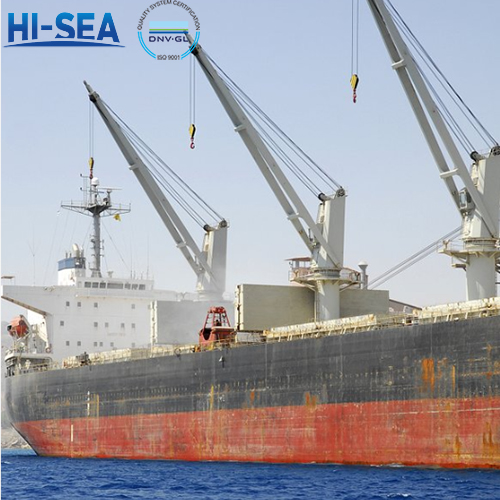
Conventional or Other Classification of Marine Cranes
Marine cranes can be classified into deck cranes, fixed rotating cranes/slewing cranes, mobile rotating cranes, gantry cranes, and other loading and unloading machinery according to conventional classification.
Overview
Marine cranes can be classified into deck cranes, fixed rotating cranes/slewing cranes, mobile rotating cranes, gantry cranes, and other loading and unloading machinery according to conventional classification.
(1) Deck crane
Machinery installed on the deck of a ship. This type of crane has a compact structure, allowing the ship to have more deck area available for use and less impact on the line of sight above the bridge. The deck crane is easy to operate, with high loading and unloading efficiency, flexible mobility, and no tedious preparation work before operation, making it increasingly widely used.
The commonly used deck cranes include fixed rotating cranes, mobile rotating cranes, and gantry cranes. There are two types of transmission methods: electric transmission and electric hydraulic transmission.
(2) Fixed rotating/slewing crane
This type of crane is the most widely used and can operate independently or in pairs on the starboard and starboard sides. The lifting capacity is generally 3-5 tons. On multi-purpose ships, it is required that a single crane can lift a 20-foot container and a double crane can lift a 40-foot container (30 tons), with a lifting capacity of 25-30 tons.
(3) Mobile rotary crane
When loading and unloading goods, it is often necessary to use a mobile rotating crane when the crane span is large and the crane boom is not too long. There are two types of mobile rotary cranes: horizontal movement along the ship and vertical movement.
(4) Gantry crane
This type of crane is widely used by container ships and barges, usually in the form of a quadruped or C-type. There is an extendable boom, a lifting crossbar, a movable bridge, and a cab. The horizontal main beam of the bridge is higher than the container stacked on the deck and has an automatic positioning device, which can accurately place the container in the container compartment or stack it on the deck during loading. There are more gantry cranes on the barge than on the container ship, with a lifting capacity of several hundred tons.
(5) Other loading and unloading machinery
There are mainly elevators, hoists, and conveyors. An elevator is a mechanical device that moves vertically along a guide rail on a ship, used to lift and lower cargo between different decks. On roll-on/roll-off ships, elevators are often used to connect each deck for transporting goods. There are several types of elevators on roll-on/roll-off ships, including scissor type and chain type, with a length of 9-18.5 meters and a width of 3-5 meters. Some cargo barges are also equipped with elevators for loading and unloading cargo barges, but their lifting capacity is much larger than that on roll-on/roll-off ships. Elevators are used to continuously transport goods in the vertical or larger inclined direction. A conveyor continuously transports goods in a horizontal or slightly sloping direction. These two types of machinery are mostly used on self-dumping ships or ships that load and unload through gangways.
For more marine crane information, kindly please click here.





